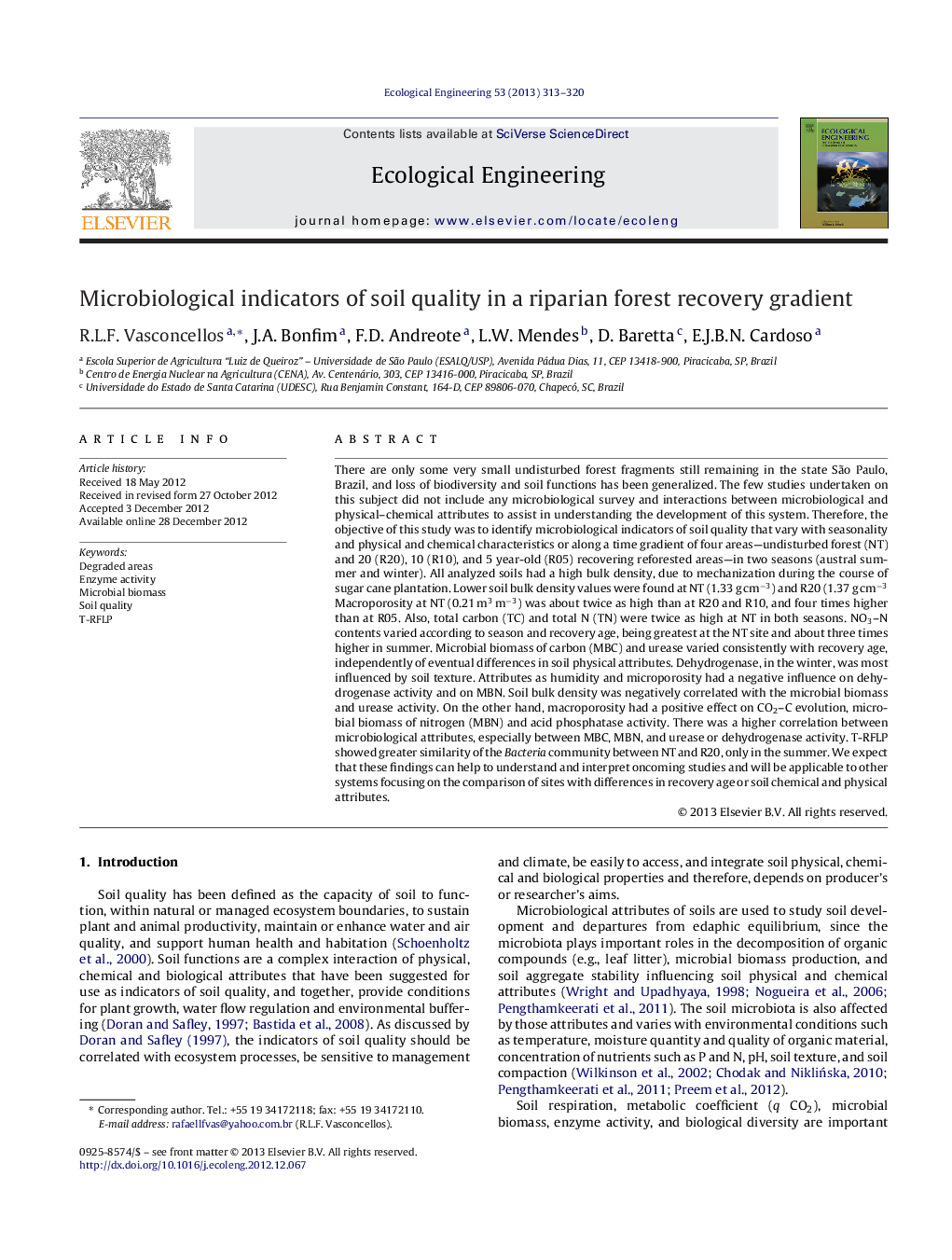| Article ID | Journal | Published Year | Pages | File Type |
|---|---|---|---|---|
| 4389698 | Ecological Engineering | 2013 | 8 Pages |
There are only some very small undisturbed forest fragments still remaining in the state São Paulo, Brazil, and loss of biodiversity and soil functions has been generalized. The few studies undertaken on this subject did not include any microbiological survey and interactions between microbiological and physical–chemical attributes to assist in understanding the development of this system. Therefore, the objective of this study was to identify microbiological indicators of soil quality that vary with seasonality and physical and chemical characteristics or along a time gradient of four areas—undisturbed forest (NT) and 20 (R20), 10 (R10), and 5 year-old (R05) recovering reforested areas—in two seasons (austral summer and winter). All analyzed soils had a high bulk density, due to mechanization during the course of sugar cane plantation. Lower soil bulk density values were found at NT (1.33 g cm−3) and R20 (1.37 g cm−3 Macroporosity at NT (0.21 m3 m−3) was about twice as high than at R20 and R10, and four times higher than at R05. Also, total carbon (TC) and total N (TN) were twice as high at NT in both seasons. NO3–N contents varied according to season and recovery age, being greatest at the NT site and about three times higher in summer. Microbial biomass of carbon (MBC) and urease varied consistently with recovery age, independently of eventual differences in soil physical attributes. Dehydrogenase, in the winter, was most influenced by soil texture. Attributes as humidity and microporosity had a negative influence on dehydrogenase activity and on MBN. Soil bulk density was negatively correlated with the microbial biomass and urease activity. On the other hand, macroporosity had a positive effect on CO2–C evolution, microbial biomass of nitrogen (MBN) and acid phosphatase activity. There was a higher correlation between microbiological attributes, especially between MBC, MBN, and urease or dehydrogenase activity. T-RFLP showed greater similarity of the Bacteria community between NT and R20, only in the summer. We expect that these findings can help to understand and interpret oncoming studies and will be applicable to other systems focusing on the comparison of sites with differences in recovery age or soil chemical and physical attributes.
